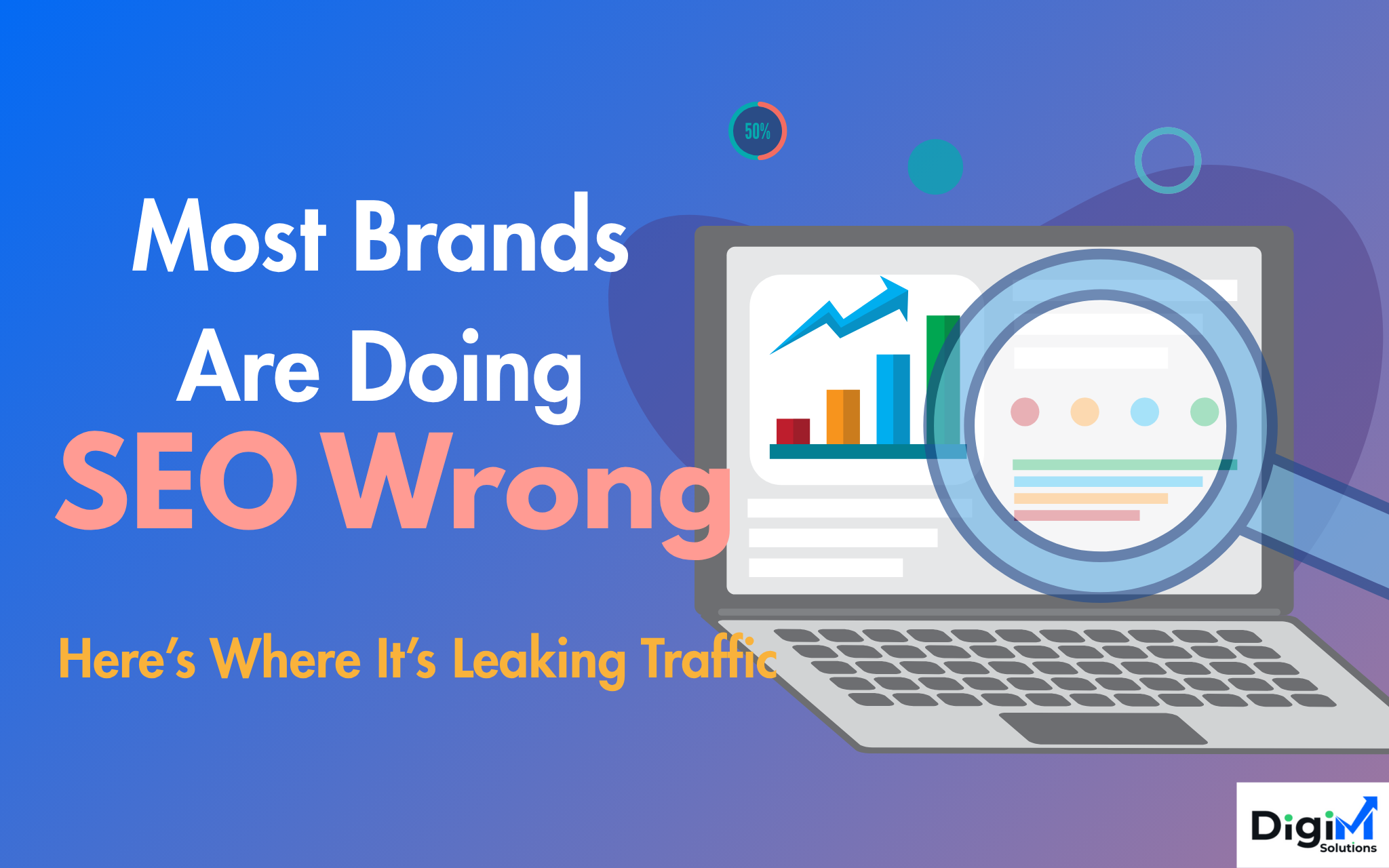Most Brands Are Doing SEO Wrong: Here’s Where It’s Leaking Traffic

Every brand wants to appear at the top of search results—but despite their best efforts, most fall short. While they might be publishing blogs, running audits, and investing in tools, they’re still losing valuable traffic. The problem? Critical SEO mistakes that silently chip away at their visibility. From technical errors to outdated strategies, these leaks often go unnoticed until rankings start to slip. In this article, we’ll highlight the most common areas where SEO fails and provide actionable solutions to fix them. If you want to stop losing traffic and start seeing real results, it’s time to plug these leaks fast.
The Costly Mistakes Killing Your Traffic
The most obvious SEO errors are often the most damaging. These mistakes silently kill your search visibility, driving potential leads to your competitors.
- Slow Page Speeds: A delay of just a second can increase bounce rates.
- Missing Meta Data: Without strong meta titles and descriptions, your pages don’t stand out on SERPs.
- No HTTPS Security: Sites without SSL certificates are marked as unsafe.
Solution: Start with a basic SEO audit using Google Search Console. Focus on fixing speed issues, adding secure protocols, and creating compelling metadata for every page.
These initial fixes are the low-hanging fruit. However, many websites go years without addressing them, leaving an open door for competitors to outpace them in rankings.
Where Your SEO Strategy Falls Apart
Many brands build SEO strategies around assumptions or outdated practices. If your plan isn’t rooted in current search trends, you’re bound to lose.
- Keyword Stuffing: Overusing keywords confuses Google and irritates users.
- Irrelevant Backlinks: Buying links or using spammy sources can harm your domain authority.
- Content Without Purpose: Publishing content without solving real user problems adds no value.
Solution: Reevaluate your SEO plan quarterly. Align it with Google’s latest algorithm updates and user behavior changes. Focus on quality, not quantity.
Also, document your SEO strategy with clear KPIs and milestones. Without a structured approach, even the best ideas fail in execution.
Why Your Rankings Aren’t Growing
If your rankings have plateaued or dropped, the problem is likely in how you structure and optimize content.
- No Topic Clusters: Creating isolated content instead of connecting related topics confuses search engines.
- Weak Internal Linking: If your site lacks internal pathways, Google won’t understand content hierarchy.
- Not Mobile-First: Google indexes mobile-first. If your site isn’t responsive, your rank suffers.
Solution: Build content silos with strong interlinking. Use mobile-friendly themes and test across multiple devices regularly.
Additionally, ensure that each page has a specific purpose and target audience. One-size-fits-all pages rarely rank well.
Traffic Loss Starts Here
Every SEO funnel has a point where potential visitors fall off. Identifying and addressing that point is critical.
- High Bounce Rates: Users are leaving without engaging because the content doesn’t match intent.
- Poor User Experience (UX): Clunky navigation and intrusive pop-ups chase users away.
- Low Dwell Time: Visitors don’t stick around if content is unengaging.
Solution: Improve content relevance and UX. Use heatmaps and session recordings to find drop-off points and redesign for engagement.
Use tools like Hotjar or Crazy Egg to visualize user interaction. Small changes in layout or call-to-action (CTA) placements can lead to major improvements in traffic retention.
Fix These SEO Leaks Fast
Delaying fixes means compounding losses. Some leaks are quick wins you can implement right away:
- Update Outdated Content: Fresh content performs better.
- Add Alt Text to Images: Helps with both SEO and accessibility.
- Repair Broken Links: Keeps your site structure strong.
Tool Tip: Use tools like SEMrush, Ahrefs, or Screaming Frog to identify errors and fix them in batches.
Another quick fix: redirect old or irrelevant pages to newer, more valuable ones. This recycles domain authority and keeps your site structure healthy.
Simple SEO Gaps, Big Traffic Loss
Often, the simplest oversights cost the most in terms of traffic. These include:
- Ignoring Local SEO: For physical businesses, local visibility is vital.
- Skipping Schema Markup: Rich snippets increase click-through rates.
- Not Capturing Featured Snippets: They drive significant traffic but require structured answers.
Solution: Optimize for location-based searches, add schema to product and service pages, and create content designed to win snippet spots.
Use FAQs, how-to guides, and bulleted lists to target featured snippets. And always claim and optimize your Google Business Profile.
The SEO Holes You’re Overlooking
Even advanced strategies can miss hidden gaps. These blind spots often include:
- Content Cannibalization: When multiple pages target the same keyword, they compete.
- Missing Canonical Tags: Duplicate content without canonical tags confuses Google.
- Non-Optimized URLs: Clean, keyword-rich URLs are more SEO-friendly.
Solution: Consolidate cannibalizing content. Set canonical tags and use simple, clear URL structures.
Also, evaluate your backlink profile. Disavow spammy links and monitor your domain authority monthly. SEO success is about precision, not guesswork.
SEO isn’t a one-time setup—it’s a continuous optimization process. Traffic leaks happen when brands don’t adapt, audit, or pay attention to details. By addressing the mistakes highlighted under each subheading, you can stop the loss and regain valuable traffic.
Fix the leaks, strengthen your foundation, and let your SEO strategy work smarter—not just harder. Start now: conduct a thorough audit, prioritize your fixes, and track improvements over time.
Because in SEO, even a small leak can sink a big ship. Don’t let yours go unnoticed.
Request a free quote
We offer professional SEO services that help websites increase their organic search score drastically in order to compete for the highest rankings even when it comes to highly competitive keywords.









